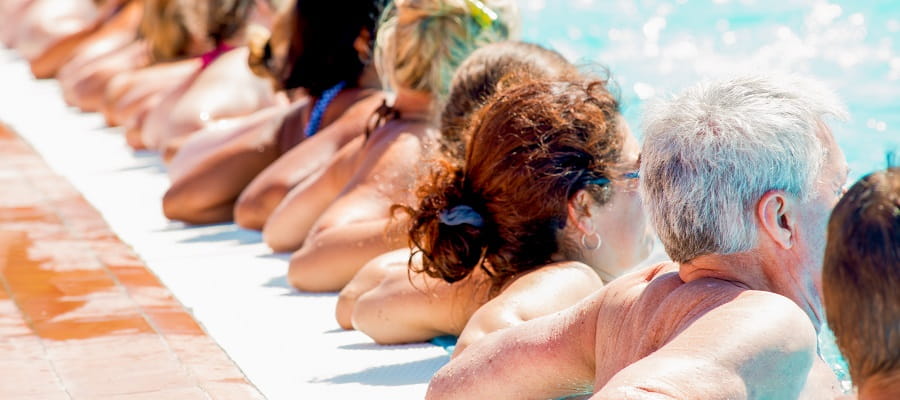
WA’s 2021-22 Aquatic Recreation Industry Report showed the highest safety assessment scores in recent years. There were approximately 22 injuries per 100,000 visits, and zero fatal drownings in the 41 pools that provided data.
Although most injuries were classed as minor, a focus on safety is needed to continue to decrease the risks. It is important to be aware of those most at risk, as well as the most common incidents and injuries so prevention strategies can be put in place.
One strategy for injury prevention is getting to know your patrons. This can be easier with regular patrons, particularly those in the older age groups who may suffer certain medical conditions that are known to staff. Being aware when these at-risk patrons are present at the facility allows lifeguards to factor in additional supervision if required.
However, it isn’t practical or feasible to get to know each patron who visits a facility. Instead, lifeguards should be aware of the types of patrons who visit an aquatic facility, and the potential risks that are unique to different groups. Knowing the characteristics of a certain group of patrons and being able to anticipate behaviours can help prevent incidents from occurring.
Here are just some of the high-risk groups that lifeguards should pay particular attention to:
- Young children - very young children may need to be intercepted if they approach the water without adult supervision.
- Elderly people - Older patrons may suffer from a variety of physical conditions or illnesses that may pose a greater risk of incident or injury.
- People appearing unwell - People who appear unwell may also be in poor physical condition at the moment which could affect their swimming ability.
- Water novices - Anyone who appears unfamiliar with the aquatic environment, such as tourists.
- People improperly dressed for swimming - Be wary of people who attempt to swim in clothing that is unsuitable for the aquatic environment, such as jeans.
- Unstable or intoxicated people - They may display a lack of coordination in their movements.
- Swimmers with floaties - People wearing flotation devices usually lack swimming skills and may need extra supervision.
- People with disabilities - Patrons with special needs may display erratic behaviour, may struggle to understand instructions and may need extra assistance getting in and out of the pool.
While it’s important to be aware of these groups, lifeguards should avoid focusing on particular patrons to the extent that other patrons are inadequately supervised. When groups of high-risk patrons or those with specific needs visit an aquatic facility, extra lifeguards may be needed to provide adequate supervision.